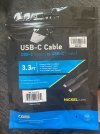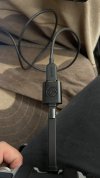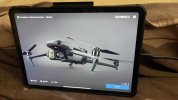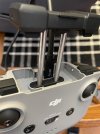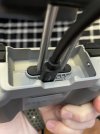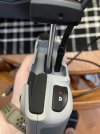I have got the iPad Pro
M1 working with the RC-1N, you do need to use an OTG cable or adapter, in order to get it to work, you also have to use the 'top' port on the controller.
I tested using the one from the
DJI FPV drone & a standard Cygnett USB-A to USB-C, but I suspect any OTG adapter should work.
The USB-C to lightning cable from Apple works to an iPhone or iPads that still have the lightning port. None of the USB-C to USB-C cables I have tried work, put an OTG adapter in and any USB-A to USB-C cable seems to work.
The USB-C connector is exactly that just a reversible connector. Its implementation is up to the manufacturer, USB 3, USB 3.1, Thunderbolt and others are all different, there is no 'standard' as such, beyond how it connects other than its a USB-C connector!
Its all most as messed up as the 'RS232 Standard' that's how old I am.
Good Info, and I'd agree with the old RS232 standards... still has issues in large AV technologies & programming.
As previously mentioned, this continues to be an iPad Pro USB-C oddity.
Your results are different than my results... which is an oddity.
I got my iPad Pro 12.9
M1 2021 out and tested... I can easily connect with multiple USB-C to USB-C cables without issues. Same results as with the Android devices, USB-C to USB-C works nicely. All these tests had the FLY App auto open, connect to Aircraft and present camera view. I could start with everything pre-connected or add the tablet after Craft & RC powered and connected... both worked on 2021
M1 iPad Pro with no issues without adapters.
Using the
DJI FPV USB-A to USB-C adapter produced different results. If adapter was connected to the RC Port, it had functionality similar to the USB-C to USB-C cable. If adapter end was connected to iPad Port it didn't work correctly (1-way transfer).
Transferring this to the 2018 iPad Pro 11" had no change in behavior; continued to be a no-connect.
NOTE: I did oddly have initial USB-C to USB-C cable connection work with 2018 iPad Pro. I disconnected, powered off RC & back on and could not duplicate successful connection. That was after multiple successful connection & disconnects with the 2021
M1 iPad Pro 12.9".... that pre-established connection within RC may have allowed a connection with 2018 unit.
Regardless of cable or adapter, the 2018 iPadPro wasn't successful. Returning back to 2021
M1, was successful each time with 4 different USB-C to USB-C cables.
Correct, there are multiple USB-C cables & adapters that all use the USB-C Interface: range from Power Only, Low Speed, High Speed, 1-way or Bi-Directional from USB3.0 to USB4, and Thunderbolt 3 to 4 specifications (TB 3/4 cables can be expensive for their specifications above USB3/4). The use of the USB-C interface can cause much confusion, giving perception all USB-C are the same when they vary widely. A USB-C cable for low speed transfer can be bi-directional, some for higher specifications are 1-way directional or can be simply a 1-way Cable. Higher specification cables can contain different specs for transfer speed. A 3.1v2 USB-C - USB-C or USB-C to USB-A can be 10GB Bi-Directional. The short DJI Default RC cable in kit is 1-way directional... note on 1 end there is RC controller stamped.
USB-C adapters vary... the common are standard USB2/3 low speed. The higher 3.1v1/3.1v2 10GB Adapters are longer containing "circuitry", when used with a USB-C 10GB cable they'll provide full 10GB specifications port to port. Adapters that are true 3.1v2 (USB3.2v2 same) will be marked 10GB or 20GB.
The oddity is limited to Apple USB-C specifications, I don't know if this is limited with different versions of iOS or if the different versions of FLY have a slightly different protocol to initiate connection that is conflicting with Apple protocols but not Android.




